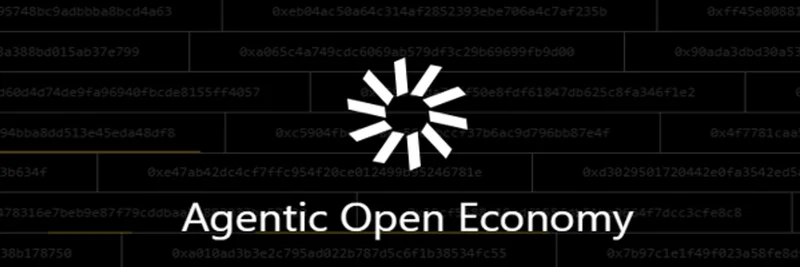What is AOE?
Agentic Open Economy (AOE) is a token on the Base chain that positions itself as a “living experiment” at the intersection of artificial intelligence (AI) and blockchain. The goal is to explore an open, permissionless, and agentic economy—think autonomous software agents coordinating, transacting, and co-creating value in digital ecosystems.
In plain terms, “agentic” refers to autonomous actors (software agents) that make decisions, coordinate with each other, and execute tasks without constant human oversight.
Vision and Potential Use Cases
AOE’s core vision is to build new primitives—basic building blocks—for a digital economy designed for machine-human collaboration. The project emphasizes experimentation over promises and aims to push what open systems can do. Potential applications include:
- Agentic marketplaces: Platforms where agents trade knowledge, labor, or compute resources.
- Payment protocols: Real-time, streaming, or micro-agent settlement for machine-to-machine economies.
- Digital frameworks: Infrastructure that enables richer co-creation between humans and AI.
One affiliated initiative is the x402 Protocol, which serves as a blueprint for permissionless creation, trading, and collaboration among agents.
Quick Token Facts
- Total supply: 1,000,000,000 AOE
- Circulating supply: Reported as 1,000,000,000 AOE (FDV equals market cap when all tokens circulate)
- Market capitalization: Around $2.9M (CoinGecko rank ~#2854); CoinMarketCap self-reported ~$2.04M (rank ~#4064)
- 24h trading volume: Varies; examples include ~$1,084,184 on Uniswap V3 (Base) for AOE/WETH and ~$267,639 from other sources
- All-time high (ATH): ~$0.003887
- All-time low (ATL): ~$0.0008148
Note: These figures are examples from recent snapshots and can change quickly. Always verify the latest data before making decisions.
Where AOE Trades
AOE is primarily traded on decentralized exchanges (DEXs) in the Base ecosystem. The main venue is the AOE/WETH pool on Uniswap V3 (Base), which has handled a significant share of the token’s volume.
For fast discovery and trading, you can also use GMGN.AI, a platform built for analyzing and transacting meme tokens across chains with smart money tracking and real-time analytics.
Tip: DEX (decentralized exchange) means you trade directly from your wallet without a centralized intermediary. Always double-check contract addresses to avoid counterfeit tokens. The official AOE contract on Base is 0x080212e31d4224e89bd94c1d5662452897741907.
Base Chain Context
AOE lives on Base—an Ethereum Layer 2 (L2) incubated by Coinbase and built using the OP Stack in collaboration with Optimism. L2s aim to offer faster, cheaper transactions while inheriting Ethereum’s security. On Base, ETH is the native gas token, and there are no plans for a separate “Base token” at this time.
If you’re new to L2s: they batch and compress transactions off the main Ethereum network (Layer 1), then settle back to L1 to reduce fees and improve throughput.
Risks and Due Diligence
AOE explicitly frames itself as “pure experimentation”—not a company, not a token promise, and not guaranteed to succeed. Treat it as a research-driven initiative rather than a traditional startup.
- Token verification: Some wallets like Phantom may flag AOE as unverified. Interact only with tokens you trust and confirm the correct contract address.
- Liquidity and volatility: DEX markets can be thin and volatile. Slippage (price movement during trades) can be high, especially for larger orders.
- Smart contract risk: Experimental protocols can carry code and governance risks. Review audits, community discussions, and on-chain activity.
None of this is financial advice. Always do your own research and consider your risk tolerance.
Why It Matters
If agentic marketplaces and payment protocols gain traction, they could enable machine-to-machine commerce at scale—agents buying compute, trading datasets, paying for microservices, and collaborating on work. AOE’s value, in that context, is less about promising a specific product and more about incubating and testing the primitives that such an economy would need.
How to Go Deeper
- Explore the project’s activity on Base and keep an eye on evolving agentic tools and frameworks.
- Track liquidity and volume on Uniswap V3 (Base).
- Use analytics platforms like GMGN.AI to monitor smart money flows, price trends, and trading activity.
- Review the OP Stack and Base documentation to better understand the L2 environment where AOE operates.
As the agentic economy evolves, expect the landscape to shift quickly. Keep learning, validate sources, and approach new experiments with caution—and curiosity.



